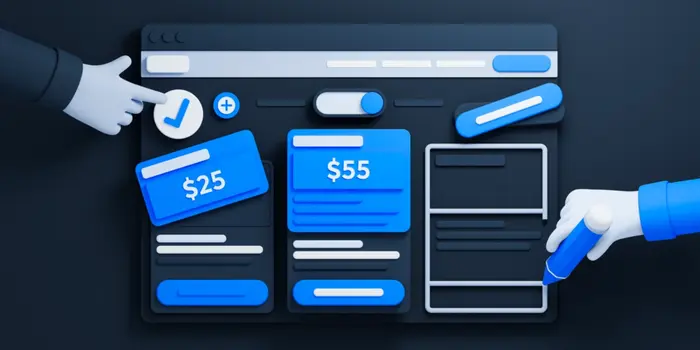Archives
The 5 Most Important Skills You Need to Master If You Are A Non-Technical (Developer) Startup Cofounder

Over the last few years, I have met and connected with over 55% of founders who are non-technical (actually most are technical, but they are not developers). The standard advice I would give them was their role was to acquire users (or customers):
A plan to acquire, nurture and grow users (customers) with as little money as possible.
After spending time thinking about this over the last few days, I think there is more than just user acquisition that non-technical founders can help the startup with. There are 7 skills (in no ordered priority) that I think will help the company tremendously.
1. User acquisition and customer development. Getting early traction is critical and in most cases more important than most other things at your startup. While it is becoming easier to build and create apps and websites, getting early users who can give you feedback on the product and become fans and champions is hard. Understanding user behavior and motivations, spending time learning about how they would use the product is critical.
2. Generating shareable content (writing great headlines, producing videos, podcasting, etc.). While content is king, the more important skill is writing killer headlines. You need good content, but without great headlines, great content is useless. Getting awareness for your startup or product without the money early on to spend on advertising, is crucial to early traction and building your brand.
3. Learning about techniques to generate awareness (building connections with Press, Bloggers and Influencers) among customers and users. Besides generating content, figuring out ways to get more of your customers to share the product with new customers (increasing the virality coefficient) is a key skill.
The best way to generate awareness among potential customers is to get existing customers to say good things about the product. The next step is getting them to share their experiences with others.
4. Cultivating and managing relationships with a strong potential investor pool. Generating enough inbound inquiries because you built a great product and got good press and coverage around it is one of the top things you need to be skilled at doing.
Ensuring that you have a good product is half the battle. The next step is to get customers. To help you scale, would then require an early set of investors. Building investor relationships, targeting the right early stage funding sources is a crucial skill.
5. Signing up beta customers, creating activity flows and user models, building the wireframes. Even if you are not technical, you can build wireframes using standard tools to share the concept with users during your customer development phase. If all you have are PowerPoint skills, use them. If you understand the domain and can build the customer use scenarios, I’d build those.
There are some other “tactical” items that fall into the purview of the non-developer cofounder including the skills to negotiate contracts, get as many “free” services as possible, apply to many freely available programs such as accelerators, pitch showcases, etc., but those are secondary.
Over the next few days I will outline each of these in detail so I can help non-technical cofounders.
Archives
How “Clustering Illusion” Stalls More #startups Than Any Other Bias

When you are doing your initial customer development, by talking to many potential users, there are many cognitive biases you need to be aware of.
Cognitive biases are tendencies to think in certain ways that can lead to systematic deviations from a standard of rationality or good judgment.
Usually most founders tend to solve problems they have exposure to or those they are aware of, or those they believe to be one that’s a large market. This stems from the “scratch your own itch” phenomenon.
I had a conversation with a founder who is building a consumer internet company, where viral effects of her product determine the growth trajectory more than any other metric. Or so, she had learned from many other founders experiences – both by talking to them and investors in the space.
After 3 months of building her mobile eCommerce product, she and her cofounder launched it in the marketplace. Initial traction was good and trending ahead of their expectations. Many of the early users were impressed with their product selection and merchandise.
Growth after the 4th month though, stalled as they were on the road trying to raise their initial funding. Most every entrepreneur knows that fund raising can be a full time job. In fact I have mentioned several times that fundraising is a poker game more than chess.
When they were trying to show their initial user growth, many investors had the same problem – was their product a trendy, 3-month-uptick or a sustainable-fast-growth business?
After hearing this from the 5th seed investor, they determined that they need to look closer at their numbers, their repeat purchase behavior and address the issue before they were going to raise any funding.
Looking at the initial numbers suggested their they had many buyers who got to know about them through word-of-mouth, and the repeat purchase was high.
She and her cofounder determined that they had to improve their virality coefficient.
This is the bias I see most often: clustering illusion.
The clustering illusion is the tendency to erroneously consider the inevitable “streaks” or “clusters” arising in small samples from random distributions to be statistically significant.
When you have very little data, you have very little data. That’s it.
Don’t make assumptions about the overall market based on very little data.
There are times when you have 60% of the data and you have to make a decision. There are times when you have 30% data and you have to make a decision.
The difference between 30% and 60% is a lot. In fact, most entrepreneurs I deal with confuse having 3% of data with 30% of data.
To reduce clustering illusion the only remedy is to get more data. You will have to run more, smaller, experiments, over smaller periods of time and do it consistently. Make your assumptions, document your hypothesis, but continue to work on getting more data.
Turns out the real problem for our entrepreneur was that the overall market was much smaller, and they found it after 1 year of trying to increase their virality coefficient. They did raise their initial funding, but have since pivoted to expand their merchandise offerings to cater to a larger market.
Archives
How to name your SaaS pricing plans? A primer from 89 examples

There are over 7500 SaaS companies according to angel List. Over the last few weeks I had a chance to review 89 of the companies to understand their free to paid conversion and also a chance to talk to 13 companies. What I learned was that time spent on the pricing page was a key indicator of conversion and you can A/B test your pricing page for colors, position of your highest and lowest prices, number of plans showed, feature listing and your call to action.
I did notice that of the 89 companies, 82 of them gave their pricing plans “names”. Each plan had a name so their customers could associate the name with the plan. Most (over 80%) used standard and conventional names but it was interesting to see the spread. Here is the data from 89 companies and 251 plans.

The most important points you want to take away are the following:
1. Even though SMB and SOHO (Small Office, Home Office) users are the first few to sign up for a SaaS service, 3 of the top 5 names were named Enterprise and Business and Large. I would imagine this has to do more with the inside out naming (the plan is large or enterprise, not the company buying it).
2. The plans named “Small or equivalent” were largely in the bottom quartile of the distribution. Even though over 70% of companies had 3 plans, only 35% of them named the smallest plan as “Startup”, “Starter” or “Lite”. The most common starting plan was named “Standard”.
3. Of the 20% of companies that used “custom” names like Boutique, Tyrannosaurs, or Garden named all their plans uniquely. The surprising element of the companies that used custom names was that most of them had images to convey the “size” of the plan.
There were some other surprising things I learned as well in my discussions.
1. In naming plans, understanding the end customer’s billing and invoicing was key. Most customers got an email invoice (a few sent PDF invoices) and they would either file them or expense those invoices (if < $50) or would send the invoices to an accounting team.
Ensuring that the “accounting” team did not ask any questions was the consistent mention among 3 of the startups with custom names for plans.
2. Naming the plans to support your payment gateway is also critical. Getting too cute with names means the payment gateway will support a higher refund request that were marginal.
3. Many of the companies had to setup standard names so their marketing and product management teams could do better analytics and research on the backend, consistent with their reporting. Surprisingly, if the names were “standard” the companies found it easier to have a conversation to understand conversion rates, pricing options and changes with their finance teams, design teams and other outsourced companies as well.
Archives
Creating Artificial Constraints as a Means to Innovation

Many of the entrepreneurs I know have created new innovative startups thanks to real constraints they had. For example, I was hearing AirBnB’s Brian Chesky, on the Corner Office podcast and he mentioned that when he and his cofounder were trying to get some money to get started and the only way to keep afloat was to “rent” their air bed they had in their room. That, then led to Air Bed and Breakfast, which is now AirBnB.
This was a real constraint they had – no money to “eat” so they had to make it happen somehow.
I have heard of many stories of innovation where in the protagonists had real constraints of either financial, technology, supply, demand, economic, social or any number of other characteristics.
The interesting story that I have also recently heard of how Facebook has “pivoted” from being a desktop offering to getting a significant part of their revenue from mobile is how they were given the arbitrary constraint of only accessing Facebook via the mobile phone.
So there are ways that you can create “artificial” constraints to force innovation to happen.
Most larger companies and some smaller ones as well, have to constantly find ways to create artificial constraints – to find a way to innovate and be more be a pioneer.
While some constraints are good – lack of funds at the early stage for example and lack of resources, there are entrepreneurs that are stymied by these constraints and those that will find a way to seek a path to go forward.
I think this is a great way for you to think about innovating in a new space. If you have constraints, find a way to use it to your advantage.
-

 Business2 days ago
Business2 days agoWhat I Learned in My First Month of Running a Startup Accelerator
-

 Business3 weeks ago
Business3 weeks ago5 Profitable Digital Business Ideas, Increase Your Income!
-

 Archives3 months ago
Archives3 months agoHow Can You Tell If An Angel Investor Is “real” Or “fake”?
-

 Business1 month ago
Business1 month agoIndividually Proficient, Collectively Efficient; Why Your First Hire Matters
-

 Business3 hours ago
Business3 hours ago6 Affordable Co Working Space around the Globe
-

 Business3 hours ago
Business3 hours ago6 How to Make a Business Presentation More Relatable
-

 Politics1 month ago
Politics1 month agoPrediction of Global Economy in 2024, Indonesia The First ASEAN Country Most Confident to Create This Program
-

 Archives1 month ago
Archives1 month agoHow Accelerators Make Money To Manage Operating Costs
